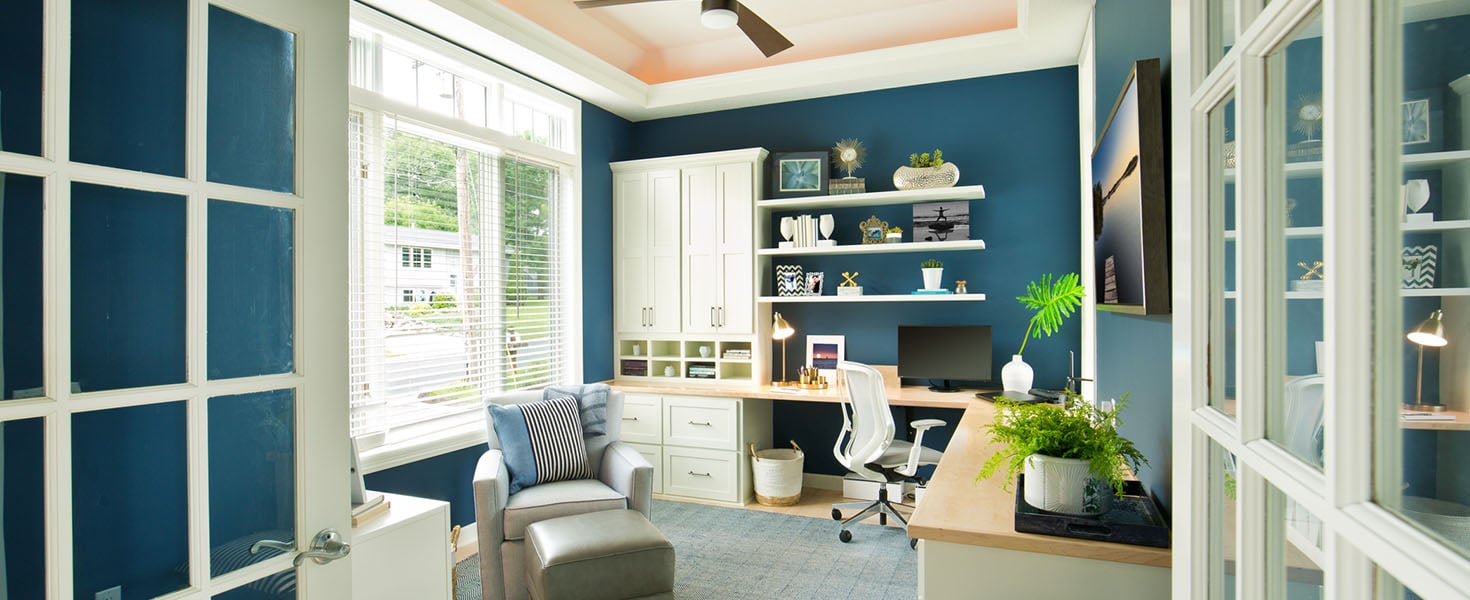10 Steps Toward an Organized Home Office
A fresh perspective to boost productivity


Most experts agree that the work-from-home economy will continue long after COVID-19 is controlled. But when you don’t have a manager or coworker looking over your shoulder, it’s easy to let papers and clutter accumulate. Consequently, it might take hours to find a file, receipt, or USB drive. Here are 10 ways to declutter and organize your workspace for 2021.
Create a dedicated space
No more working at the kitchen table. Set up an office in a room—if you have one. If not, use the corner of a room, a seldom-used hallway or closet, or a mobile desk that’s whisked away at the day’s end.
“The goal is to separate work from family life”, says Cheryl Smith, an organization specialist with Consider it Done Transition Services in Bloomington, Indiana.
“If there is no door, think about purchasing a pretty trifold screen or room divider to block off the office,” she says. A curtain on a tension rod will also do the trick.
Equip the office
“Outfit the area with its own supplies, from pens to a printer”, Smith says. Running to the kitchen for a stapler or paperclip puts a damper on productivity and invites distractions.
Reduce clutter
Follow Marie Kondo’s lead and empty the room. Label boxes “keep,” “store,” or “toss,” says Marty Basher, an organization expert and designer with Modular Closets in Lakewood, New Jersey.
Empty the shelves, clear out drawers, and group like items together for a simple assessment. If you have 10 scissors, for instance, get rid of nine.
Be ruthless. “No one needs to hang on to a stapler or monitor that’s broken,” Basher notes. “Do you really need 500 pens?”
Store the items you use daily—paperclips, a stapler, or Post-It notes—within reach. You can store other items farther from your desk or in the closet.

Establish work zones
If you have enough space, allot a task, such as filing or writing, to an area. Keep relevant materials in those zones.
Purge the paper
Yes, it’s daunting. But paper takes up space—on the desk and in cabinets. “A small pile of papers can quickly turn into chaos if not continually managed,” Basher agrees.
What do you keep? Forbes.com has a handy list. For instance, keep tax returns for at least seven years—if not longer. Toss non-tax-related items, such as bank and credit card statements after a year. Birth, death, and marriage certificates, and wills are examples of forever documents.

Go digital
Scan and backup documents as much as possible, Basher recommends. Most bank and credit card statements are now available online.
“Resist the urge to print. But if you prefer to hold documents related to a project, place a folder-file holder on your desk,” he says. Limit the number of files to the available slots.
Some people prefer three-ring binders, while others like traditional files. Pick a lane and stick to it. “Don’t buy a pack of pretty folders if you know you won’t use them,” Smith says.
Plan before buying
“Don’t purchase storage products before determining your layout and editing your items,” says Tonya Dybdahl, space planning and design assistant manager at National Business Furniture. Otherwise, you could wind up with a mound of unneeded bins, drawer dividers and file folders, which will only add to the mess.
Once you know where your computer, files, and books belong, and you’ve determined a storage system, go shopping. Invest in a labeler or erasable chalk pen, so you know what is in each bin.
Practice cord control
Whether they’re dangling from outlets or snaking across desks, electronic cords contribute to clutter. Go wireless when you can, Basher says.
When you can’t, use one of the many products on the market that corrals or hides cords. Even taping them to the back of a desk or cabinet can help.
Look up
Wall storage above your desk helps keep your work area clean. “Wall office supply holders can handle everything from files to staplers and tape dispensers,” Basher says.
Installing shelves or cubbies above your desk also gives you a place for photos and decorative items.
Personalize your space
Artwork, table lamps, rugs, and plants will make your office more inviting. Don’t get complacent. Rearranging or swapping out places can help keep things interesting.
